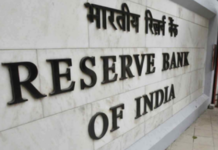New Delhi–Widespread adoption and use of digital finance by emerging economies, including India, can fire their growth by an additional 6 per cent or $3.7 trillion which could create up to 95 million additional jobs across all sectors by 2025, a McKinsey study has said.
“Overall, we calculate that widespread use of digital finance could boost annual GDP of all emerging economies by $3.7 trillion by 2025, a 6 per cent increase versus a business-as-usual scenario,” McKinsey said in its report ‘Digital Finance For All’.
Detailed inputs from field research in seven emerging economies that cover a range of geographies and income levels — Brazil, China, Ethiopia, India, Mexico, Nigeria, and Pakistan — was carried out, the report said.
“Nearly two-thirds of the increase would come from raised productivity of financial and non-financial businesses and governments as a result of digital payments. One-third would be from the additional investment that broader financial inclusion of people and micro, small, and medium-sized businesses would bring,” it said.
“The small remainder would come from time savings by individuals enabling more hours of work.”
With the increased use of digital payments, governments could gain $110 billion per year from reduced leakage in public spending and tax collection — money that could be devoted to other priorities. The resulting increase in aggregate demand could create nearly 95 million new jobs across all sectors, it added.
The latest Mckinsey report noted that emerging economies have negligible penetration of digital payments — less than 1 per cent of total transactions.
As the cost of microchip and biometric technology declines, developing countries are increasingly able to implement digital ID programmes, the report noted.
India’s Aadhaar biometric ID programme is one instance of success. Just over $1 billion has been spent since 2010, and more than one billion people, including nearly the entire adult population, have been signed up by 2016.
In the two years from its launch in August 2014, the Pradhan Mantri Jan-Dhan Yojana (PMJDY) has generated more than 220 million new accounts and over $6 billion in deposits. The Reserve Bank of India is now working with non-bank financial entities to launch “payments banks”, entities that will sell simple payment and savings products without a full banking license.
Using digital channels rather than brick-and-mortar branches dramatically reduces costs for providers and increases convenience for users, opening access to finance for people at all income levels and in far-flung rural areas.
“The potential impact on GDP for each country depends on its starting point. Lower-income countries such as Ethiopia, India, and Nigeria have the largest potential, given their low levels of financial inclusion and digital payments today,” it said.
Pakistan currently has a less developed financial system requiring greater upfront investment, and thus would not have as large an increase in productivity as some of its lower-income peers, the report said.
Middle-income countries such as China has the lowest additional GDP potential of our seven countries because its debt levels are relatively high today and it has less room to grow credit further in a sustainable manner, it added.






